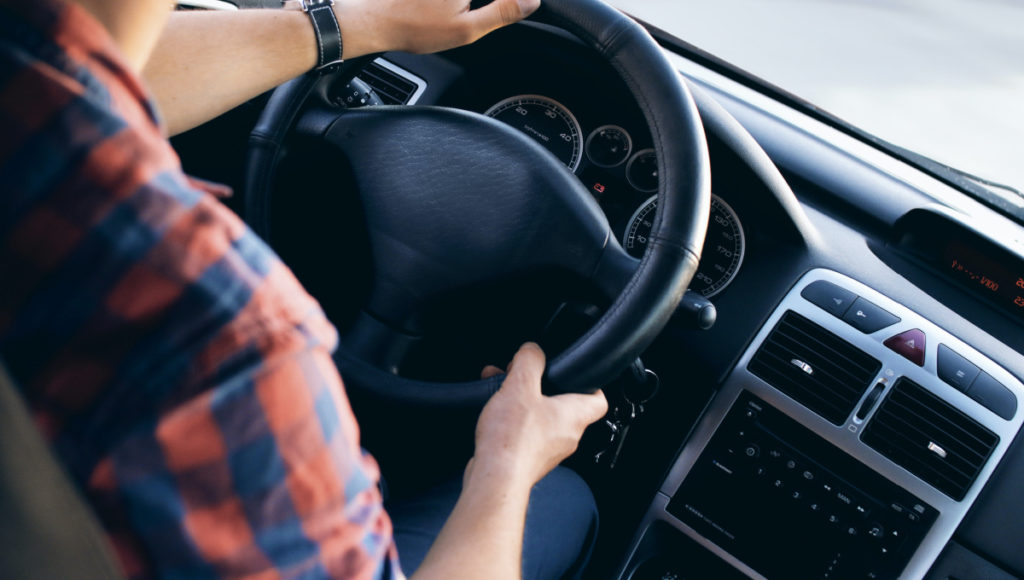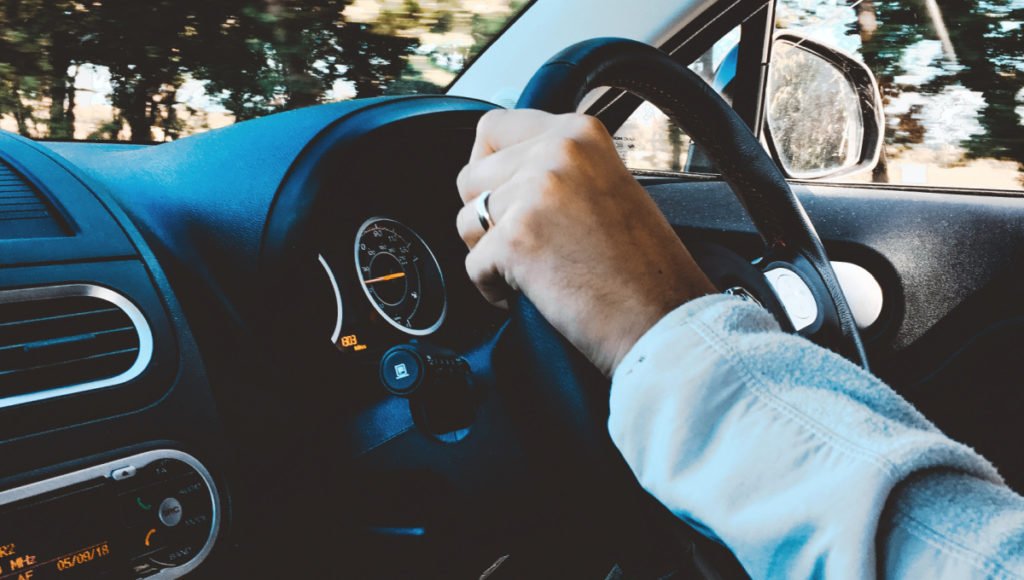
Driving can take you to some fantastic destinations, whether you’re traveling on vacation with family or to a job you love. Unfortunately, driving is also notorious for what it can bring you: unwanted back pain.
What Causes Back Pain While Driving?
Understanding how time behind the wheel causes muscular imbalances and other pain promoters can help alleviate back pain while driving. The most significant problem with driving is that it is a sedentary activity. Our chiropractor, Dr. David Foss, knows your body was not designed to sit for several hours every day. Whether you’re sitting behind the wheel or in an office chair, sitting slows blood circulation and the wholesome oxygen and other nutrients it brings to every part of the body.
It’s no secret that driving is not a recipe for perfect posture. The next time you’re on a highway, take a look at the other drivers, and you’ll see slumped, strained, and stressed bodies all around. Since good posture is necessary for optimal nerve function, driving can cause malfunction and the pain that comes with it.
Subpar posture and long periods of stillness breed muscle spasms, tightness, and soreness. Time behind the wheel can intensify your pain if you have a painful long-term condition such as:
- Fibromyalgia
- Compression Fracture
- Arthritis
- Injuries from Past Collisions
How You Can Alleviate Back Pain While Driving
The insight you’ve gained so far about back issues from driving provides valuable clues for gaining relief. In general, you can alleviate back pain while driving by adjusting your vehicle, modifying your technique, or engaging in self-care methods. The following nine tips from our chiropractor will help you ditch discomfort by embracing wellness-minded driving.
Tip #1: Rest Your Weary Head
Your headrest is for more than catching a quick nap in your car. Although designs vary widely, headrests are designed to support your head while you drive. This means that you shouldn’t have to tilt or otherwise move your head for it to rest on this part of your seat. For optimal support, align the headrest so the middle contacts the back of your head.
Tip #2: Find a Better Seat
When you’re at a game or concert that doesn’t have assigned seats, you wouldn’t think twice about moving down a bench or two for a better view. Driving shouldn’t be any different. You should have the best seat available for viewing.
Buying a new vehicle or replacing your seat with an upgraded model are not viable options for most people. Fortunately, you can adjust most seats to optimize your safety and comfort.
To get the best fitting seat for driving,
- Sit with your back against the seatback
- Recline your seat until it forms a 100 to 110-degree angle with the floor
- Slide your seat until your chest is at least 10 inches away from the steering wheel
- Place a lumber cushion or other pillow to fill any gap between your lower back and the seat

Tip #3: Get a Grip
One area many drivers don’t think of adjusting is the steering wheel. Most steering wheels are telescoping, so you can adjust them up or down to suit your height. No matter your height, you should comfortably hold your steering wheel with your hands in the 9 o’clock and 3 o’clock positions for maximum comfort and safety.
Tip #4: Check Your Mirrors
Once you have adjusted your seat and steering wheel, it’s time to adjust your mirrors. Since mirrors are designed to help increase your visual field and keep you safer behind the wheel, you should be able to use them while sitting in a straight and neutral posture. If you need to twist or turn your head, neck, or trunk, you need to readjust your mirrors. Since correctly set mirrors optimize your view when sitting with good posture, a skewed view will help remind you to adjust to a healthier posture.
Tip #5: Cruise a Little
Cruise control is not just for long trips. If you know how to use it properly, cruise control can help you maintain good alignment while driving. When this feature is engaged, it allows you to put both feet flat on the floor, so your weight is evenly distributed over your lower body.
Tip #6: Make a Grand Entrance (and Exit)
Making an entrance is about more than improving your image. It can enhance your health. When you get into your car, face the door and sit on the seat. Then, swivel your body into position without twisting your back. When it’s time to leave your vehicle, reverse this sequence for a wellness-boosting exit.
Tip #7: Give Yourself a Break
Whether you’re behind the wheel or not, sitting for extended periods is one of the worst things you can do for your body. If you’ve been driving for more than an hour or two, pull over and take a break. Play a game of freeze tag with the kids, go on a short stroll, or perform some gentle stretches. Whatever you do, be sure to keep moving.
If you’re stuck in traffic or can’t leave your car for another reason, you can still get in some movement. If you’re stopped, you can put your car in park and stretch your legs or march in place. If you’re not riding alone, encourage your passengers to dance to the music, put down their devices to stretch, or move in any other way possible.
Tip #8: Go to Extremes
Cool and hot compresses provide so much comfort for sore muscles. There is no reason why you can’t enjoy a compress recommended by our chiropractor when you hit the road. Reusable ice packs can be removed from your freezer and wrapped in a towel before you leave home. Portable heat packs that generate heat through a chemical reaction give you heat without pesky power cords or inconvenient batteries. If you have a vehicle with heated seats, turn it to your preferred setting for some soothing heat while on the road.
Tip #9: The Great Escape
“Mind over matter” isn’t a viable strategy for treating your pain long term. However, a little distraction can be a good thing. Music has been shown to distract during painful medical procedures, so it’s worth trying. If you’re in the mood for the spoken word, listen to an entertaining podcast or audiobook.
Chart Your Course to Healthier Driving
Following these tips can provide some relief for your driving-related back pain. If you want to target the source of your back pain, you should consider chiropractic care to help alleviate back pain while driving. Our chiropractor, Dr. David Foss, provides comprehensive chiropractic care designed to help you minimize pain and maximize your enjoyment of life. If you want to get the most from life, call our Vital Wellness Center or book an appointment with us through our online scheduling page.
